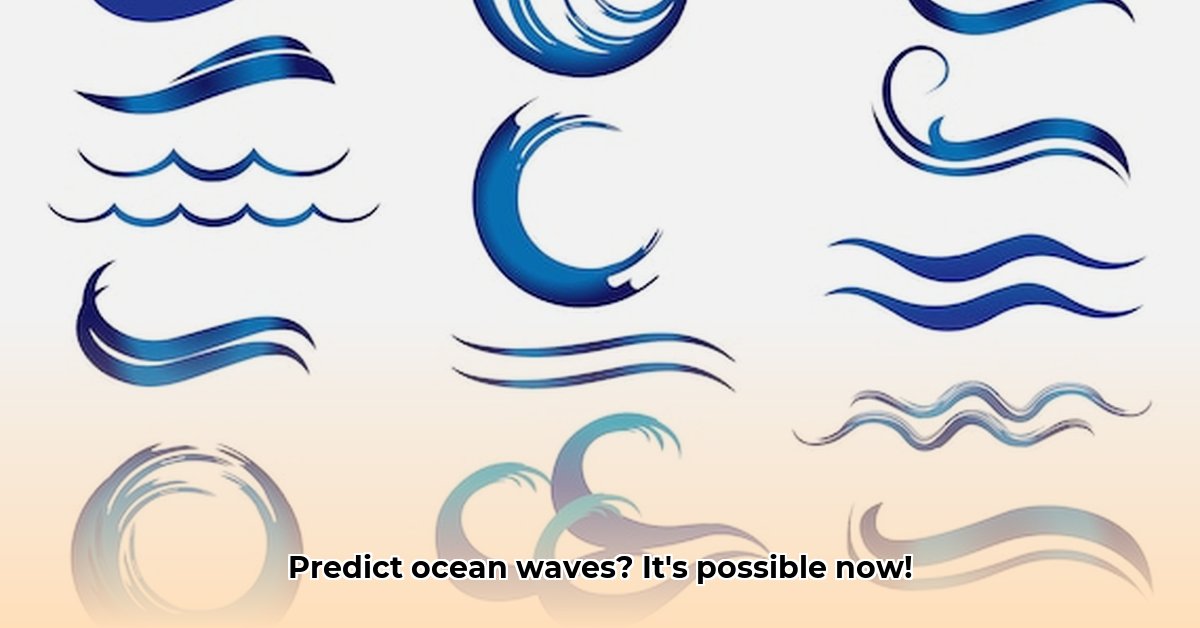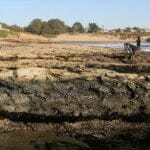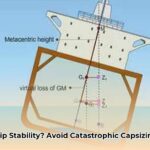Decoding the Dance of Ocean Waves: From Ripples to Tsunamis
Ocean waves, captivating in their power and beauty, are dynamic forces that shape our world. They carve coastlines, influence maritime operations, and, at times, unleash devastating fury. Understanding and predicting their behavior is critical, driving ongoing scientific advancements in wave forecasting. This exploration delves into the formation of waves, from gentle ripples to towering tsunamis, and examines the cutting-edge techniques used to predict their motion and mitigate their impact.
Wind, the primary sculptor of waves, transfers its energy to the water’s surface. This interaction generates ripples that, under sustained wind and vast open water (fetch), evolve into formidable swells. The strength, duration, and fetch of the wind are key factors influencing wave development. Beyond wind, powerful geological events like earthquakes and volcanic eruptions can trigger tsunamis, showcasing the ocean’s immense energy. Predicting these catastrophic waves requires intricate models and rapid data processing.
Wave prediction is far from a purely academic pursuit. It is essential for coastal engineering, ensuring the safety of maritime activities, guiding environmental management decisions, and informing scientific research. Accurate wave forecasts are vital for designing resilient coastal defenses, safeguarding communities and infrastructure from erosion and flooding, and optimizing the operation of offshore structures.
The physics underpinning a breaking wave is a captivating interplay of forces. Each wave possesses unique characteristics: wavelength (distance between crests), height (vertical distance from trough to crest), and period (time between passing crests). These parameters, interwoven by water depth, gravity, and surface tension, dictate wave behavior. Deep-water waves, unrestricted by the seabed, behave differently from shallow-water waves, whose interaction with the bottom causes them to break as they approach the shore.
Predicting these complex interactions requires sophisticated modeling. While simplified linear wave theory provides a foundation, real-world wave prediction relies on spectral wave models that account for the intricacies of wave generation, propagation, and dissipation. Dr. Sarah Chen, Coastal Engineer at the University of California, Berkeley, emphasizes the importance of accurate wave prediction: “Accurate wave prediction is vital for coastal communities. We use these predictions to design resilient coastal defenses and protect against erosion and flooding.”
The process of wave prediction involves a continuous cycle of data collection, model selection, simulation and analysis, and validation and refinement:
- Data Collection: Buoys, satellites, and advanced sensor networks gather real-time data on wave height, period, direction, and other relevant environmental parameters.
- Model Selection: Scientists select appropriate wave models—accounting for factors like water depth, wind conditions, and the presence of currents—based on the specific scenario, whether it involves deep-water waves, shallow-water waves, or tsunamis.
- Simulation and Analysis: Powerful computers run these models, simulating wave behavior under various conditions and projecting future wave characteristics.
- Validation and Refinement: Model predictions are rigorously compared with real-world observations, enabling continuous refinement and improvement of forecasting accuracy.
Predicting Tsunami Wave Heights: Advanced Modeling Techniques
Forecasting tsunami wave heights, especially for near-field events where the source is close to the impacted coastline, remains a formidable challenge. Traditional models often struggle to capture the rapid onset and inherent uncertainties of these destructive waves. However, advancements in modeling techniques, such as Bayesian Neural Networks (BNNs) and scenario superposition methods, are revolutionizing tsunami prediction, offering improved accuracy and speed, and enabling more effective disaster preparedness and response.
Traditional tsunami models face limitations due to the extremely short timeframe involved in near-field events. The proximity of the source leaves minimal time for warning, making accurate and rapid forecasting paramount. BNNs, a powerful form of artificial intelligence, are proving invaluable in addressing this challenge. These networks learn from historical tsunami data, analyzing vast datasets to identify complex patterns and relationships between earthquake characteristics, seafloor topography, and resulting wave heights.
Furthermore, the incorporation of atmospheric pressure waves into tsunami models represents a significant advancement. The Hunga Tonga-Hunga Ha’apai eruption dramatically highlighted the profound influence of atmospheric effects on tsunami propagation, underscoring the need to integrate atmospheric data into prediction models for greater accuracy. Dr. Kenji Tanaka, Geophysicist at the Japan Meteorological Agency, emphasizes this point: “The integration of atmospheric wave interactions into tsunami models is a major step forward. The Hunga Tonga-Hunga Ha’apai eruption underscored the importance of considering these atmospheric effects for accurate predictions.”
The process of advanced tsunami prediction combines comprehensive data integration with cutting-edge modeling techniques:
- Data Integration: Data from seismic sensors, detailed seafloor mapping, and atmospheric monitoring systems are combined to provide a holistic view of tsunami generation and propagation.
- BNN Training: Bayesian Neural Networks are trained on extensive historical tsunami data, learning to recognize intricate patterns and predict wave heights with enhanced accuracy.
- Scenario Superposition: Multiple simulations are run, varying input parameters to encompass a range of possible scenarios and create a more comprehensive and robust prediction of tsunami waveforms.
- Real-time Monitoring and Alerting: These advanced models are integrated into early warning systems, enabling rapid dissemination of critical information to coastal communities, enhancing preparedness and facilitating timely evacuations.
Coastal Engineering and Shoreline Protection: The Power of Wave Modeling
Protecting coastlines from the relentless forces of the ocean requires a deep understanding of wave dynamics and their impact. Coastal engineers utilize water wave modeling, a sophisticated approach akin to weather forecasting but specifically tailored to the marine environment, to anticipate wave behavior and design effective coastal defenses. These models enable engineers to predict wave impacts, assess risks, and implement strategies to safeguard communities and infrastructure from erosion and flooding.
Ocean waves are powerful agents of change, shaping coastlines, eroding beaches, and posing threats to coastal structures. Understanding their impact is fundamental for effective coastal protection. Coastal engineers employ various modeling techniques, including physical models, numerical models, and composite models, each with its own advantages and limitations. Physical models, representing scaled-down versions of coastal environments, provide precise data on wave dynamics but are limited in their ability to represent large-scale phenomena. Numerical models leverage computational power to simulate wave behavior across extensive areas, offering flexibility but requiring accurate input data. Composite models combine the strengths of both approaches, enhancing accuracy for complex coastal systems.
Choosing the appropriate wave model is crucial and depends on the specific application, available resources, and desired level of accuracy. Dr. Maria Rodriguez, a Coastal Engineer at the Woods Hole Oceanographic Institution, explains: “The choice of wave model depends on the specific application. For a detailed study of a small beach section, a physical model might be ideal. For larger-scale predictions of storm impacts, numerical models are more appropriate.”
The process of coastal protection planning and implementation involves a structured approach:
- Data Acquisition: Comprehensive data on wave characteristics, bathymetry (underwater topography), and coastal features are collected to characterize the specific coastal environment.
- Model Selection: Based on the project’s scope, available resources, and the complexity of the coastal system, engineers select the most suitable wave model—physical, numerical, or composite.
- Simulation and Analysis: The chosen model is run to simulate wave interactions with the coastline, predicting potential impacts such as erosion, overtopping, and structural stresses.
- Design and Implementation: The model’s output informs the design and implementation of appropriate coastal protection measures, including seawalls, breakwaters, beach nourishment, and other strategies.
Mitigating Wave Risks in Deepwater Offshore Structures
Deepwater offshore structures, essential for energy production, research, and other maritime activities, face constant challenges from powerful ocean waves. While traditional mitigation methods exist, they can be expensive and sometimes ineffective. Innovative wave energy mitigation strategies are emerging, offering substantial improvements over conventional approaches. Among these advancements, compliant cell tuned liquid mass dampers (CLMDs) and floating pontoon metastructures are revolutionizing the protection of these critical assets, enhancing their safety and longevity.
Deepwater structures are subjected to immense forces from ocean waves, demanding robust and effective mitigation strategies. CLMDs offer an ingenious solution. These devices utilize water within the structure itself to counteract wave-induced vibrations. Like a sophisticated pendulum, the controlled movement of water within tanks dampens the structure’s sway, minimizing the impact of wave forces. Floating pontoon metastructures, on the other hand, create artificial reefs that attenuate wave energy before it reaches the main structure. These strategically designed structures act like wave breakers, dissipating wave energy and protecting the structure from the full force of the ocean.
While these technologies hold immense potential, rigorous evaluation is essential. Dr. James Evans, a Structural Engineer at a leading offshore engineering firm, cautions: “While both CLMDs and floating pontoon metastructures show great promise, further research is needed to evaluate their long-term performance, cost-effectiveness, and potential environmental impacts.” His words highlight the importance of thorough testing and analysis before widespread implementation.
The process of implementing these innovative mitigation strategies involves careful assessment, technology selection, design and integration, and ongoing monitoring and evaluation:
- Assessment: Thorough assessment of the prevailing wave conditions, structural vulnerabilities, and site-specific factors is conducted to determine the most appropriate mitigation strategy.
- Technology Selection: Based on the assessment, engineers select the most suitable technology—CLMDs, floating pontoon metastructures, or other innovative solutions—tailored to the specific needs and environmental conditions.
- Design and Integration: The chosen mitigation system is meticulously designed and seamlessly integrated into the offshore structure’s design.
- Monitoring and Evaluation: Continuous monitoring of the mitigation system’s performance and ongoing evaluation of its effectiveness over time ensure optimal functionality and identify any necessary adjustments.
Through ongoing research,
- Amazing March Fun Facts: Unveiling History & Celebrations - April 15, 2025
- Master how to write height: A complete guide - April 15, 2025
- How High Are Your Standards Test: Find Your Perfect Match Now - April 15, 2025
















